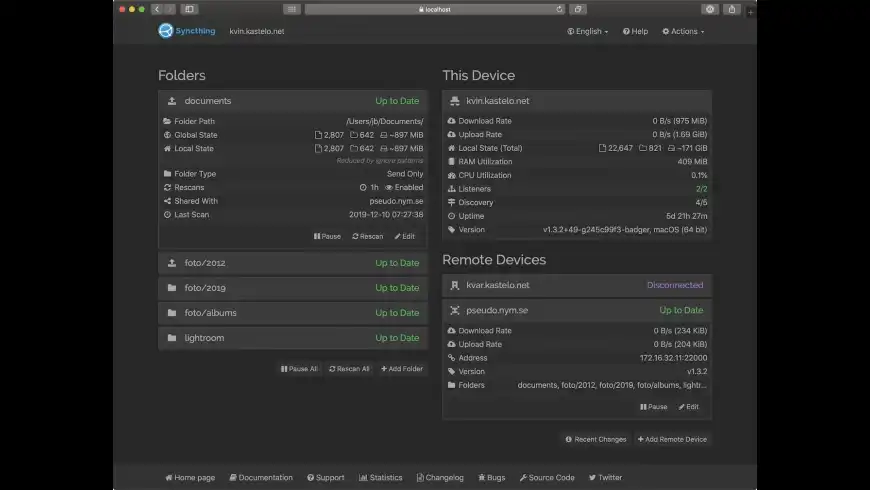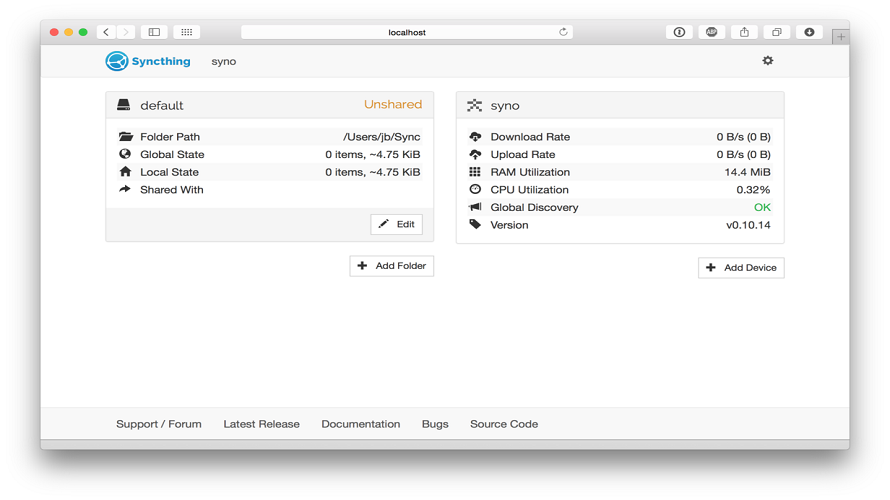Another way to backup mobile photos to a headless server, besides using Google Photos.

Here’s a little how-to on how to use the new syncthing-plugin for your FreeNAS-server. Syncthing is an opensource file synchronisation client/server application. It’s a great alternative to btsync or Dropbox. Note: The following text contains passages from my other guide on how to setup FreeNAS. Syncthing replaces proprietary sync and cloud services with something open, trustworthy and decentralized. Your data is your data alone and you deserve to choose where it is stored, if it is shared with some third party and how it's transmitted over the Internet. Running Syncthing as a system service ensures that Syncthing is run at startup even if the Syncthing user has no active session. Since the system service keeps Syncthing running even without an active user session, it is intended to be used on a server.
I am running a Ubuntu 20.04 server on a Raspberry Pi 4 and trying to use Syncthing (supports Windows, Mac, Linux, and Android) to backup my mobile photos. Following is notes on steps:
Installing Syncthing
Ref: https://apt.syncthing.net/ and https://www.linuxbabe.com/ubuntu/install-syncthing-ubuntu-desktop-server
Amazon Affiliate Store ️ we used on Kit (affiliate Links) ️ ITProT.
Configuring to allow external access
Syncthing Vs Nextcloud
Ref: https://docs.syncthing.net/users/faq.html#how-do-i-access-the-web-gui-from-another-computer
The syncthing systemd service creates configuration files under /home/username/.config/syncthing/ and a folder /home/username/Sync as the default sync folder. The main config file is /home/username/.config/syncthing/config.xml.

Now we need to modify the config.xml file Portrait studio max.
to change 127.0.0.1:8384 to 0.0.0.0:8384
Enable the service at system start

Ref: https://docs.syncthing.net/users/autostart.html#using-systemd
There are two types of services that can be enabled: system service and user service.
Running Syncthing as a system service ensures that Syncthing is run at startup even if the Syncthing user has no active session. Since the system service keeps Syncthing running even without an active user session, it is intended to be used on a server.
Running Syncthing as a user service ensures that Syncthing only starts after the user has logged into the system (e.g., via the graphical login screen, or ssh). Thus, the user service is intended to be used on a (multiuser) desktop computer. It avoids unnecessarily running Syncthing instances.
I am planning to set up the system service:
(NOT necessary for Ubuntu >=18.04) From git location mentioned above copy the
Syncthing/etc/linux-systemd/system/syncthing@.servicefile into the load path of the system instance. [/lib/systemd/system/]Enable and start the service. Kicad export dxf. Replace “ubuntu” with the actual Syncthing user after the @:
Then we can check the status of the servie:
Syncthing Alternative
Accessing the Web interface (GUI) from another computer
Syncthing Synology
The address is by default: [server IP]:8384
Should set a password and enable HTTPS.
Syncthing Review
More to read: the FAQ of Syncthing
